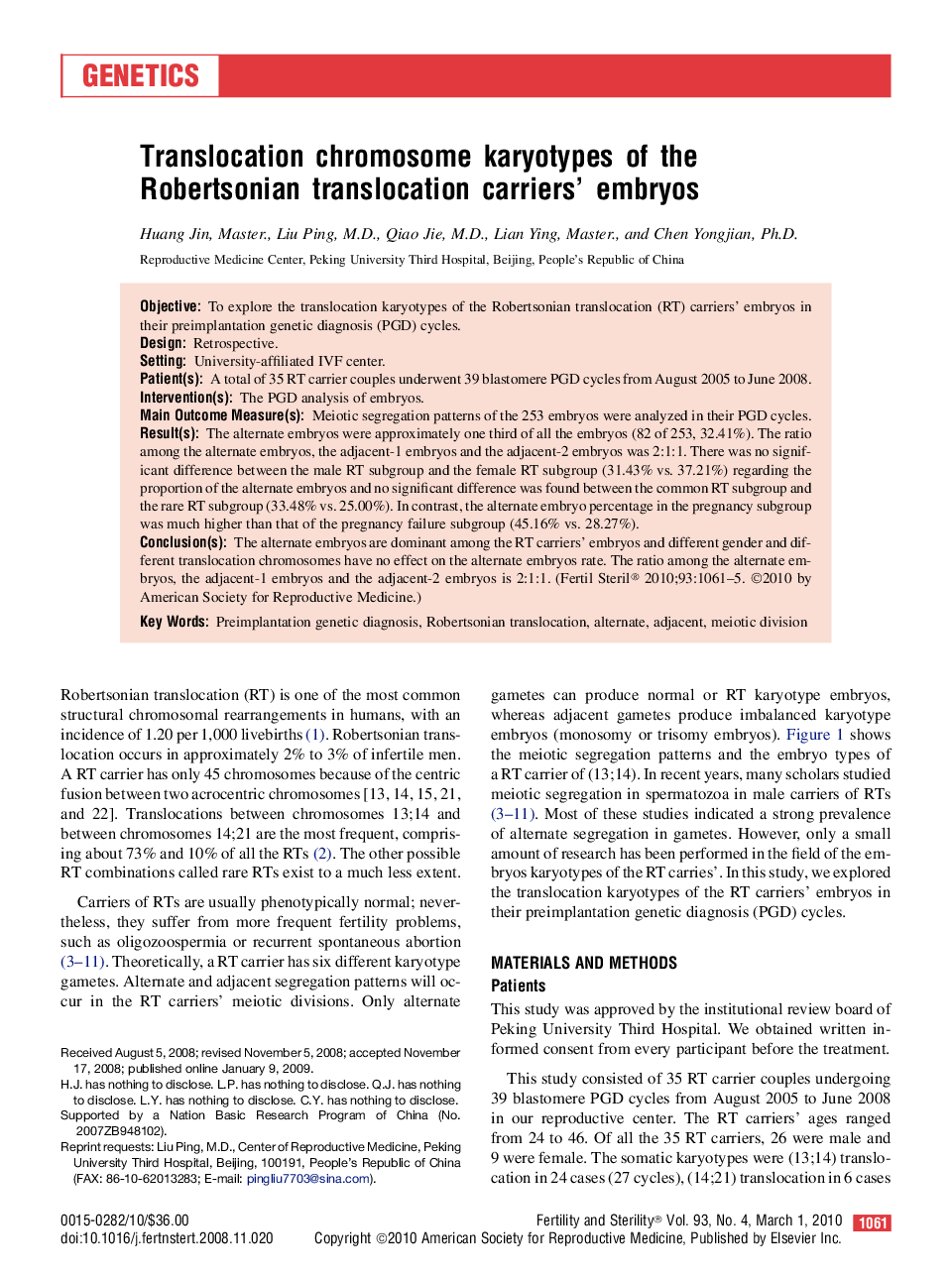| Article ID | Journal | Published Year | Pages | File Type |
|---|---|---|---|---|
| 3933516 | Fertility and Sterility | 2010 | 5 Pages |
ObjectiveTo explore the translocation karyotypes of the Robertsonian translocation (RT) carriers' embryos in their preimplantation genetic diagnosis (PGD) cycles.DesignRetrospective.SettingUniversity-affiliated IVF center.Patient(s)A total of 35 RT carrier couples underwent 39 blastomere PGD cycles from August 2005 to June 2008.Intervention(s)The PGD analysis of embryos.Main Outcome Measure(s)Meiotic segregation patterns of the 253 embryos were analyzed in their PGD cycles.Result(s)The alternate embryos were approximately one third of all the embryos (82 of 253, 32.41%). The ratio among the alternate embryos, the adjacent-1 embryos and the adjacent-2 embryos was 2:1:1. There was no significant difference between the male RT subgroup and the female RT subgroup (31.43% vs. 37.21%) regarding the proportion of the alternate embryos and no significant difference was found between the common RT subgroup and the rare RT subgroup (33.48% vs. 25.00%). In contrast, the alternate embryo percentage in the pregnancy subgroup was much higher than that of the pregnancy failure subgroup (45.16% vs. 28.27%).Conclusion(s)The alternate embryos are dominant among the RT carriers' embryos and different gender and different translocation chromosomes have no effect on the alternate embryos rate. The ratio among the alternate embryos, the adjacent-1 embryos and the adjacent-2 embryos is 2:1:1.
